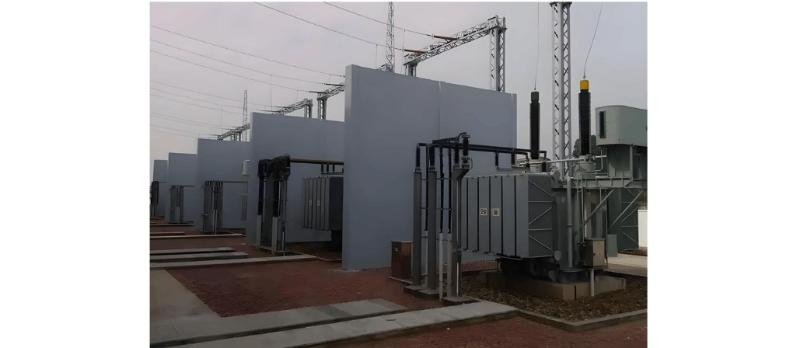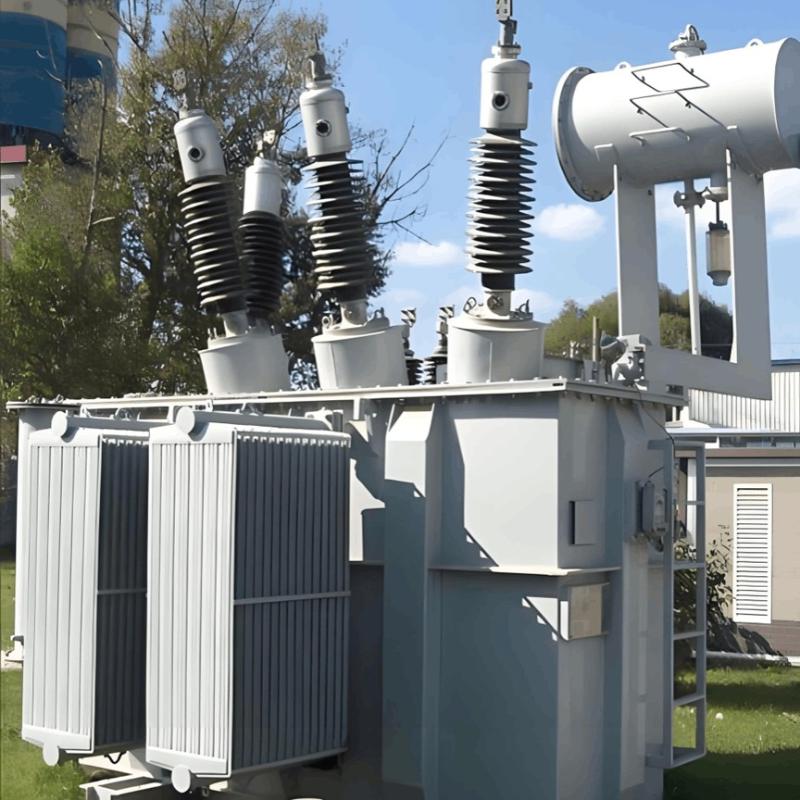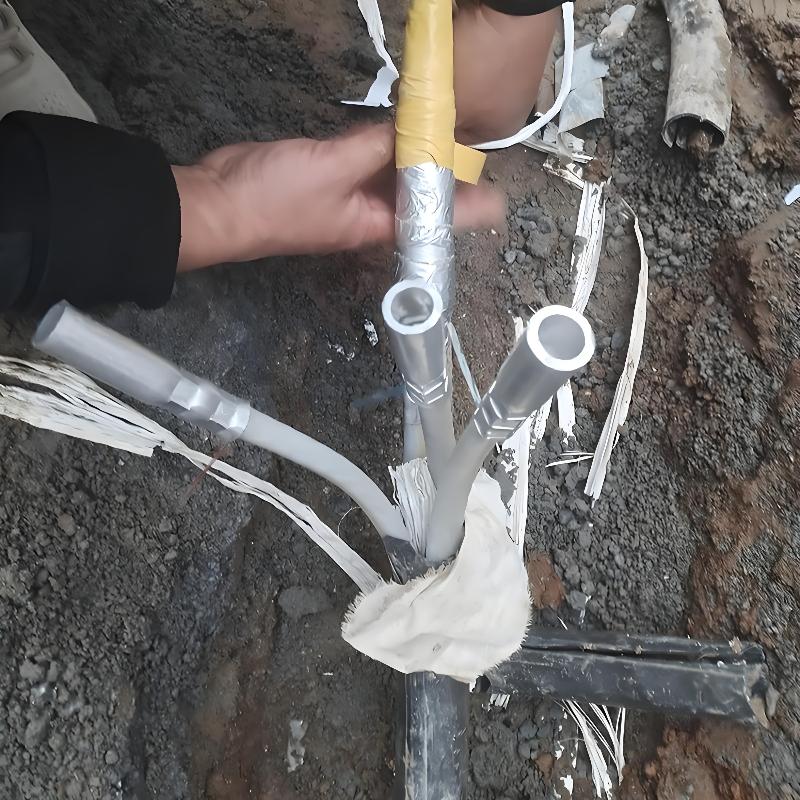Bisagol ang maong ekonomiya sa Tsina, ang industriya sa kuryente usab nagpauli sa sukol, nagdaghan ang mga pangutana alang sa gipasabot nga kapasidad ug ang tungan-tungang kapasidad sa mga transformer. Basahon kini nga artikulo tungod kay naghatag kini og maong pagpasabot sa apat ka aspeto: konstruksyon sa transformer, pagprotekta sa transformer gikan sa lightning, mga sayop sa transformer, ug ingon man sa ingay sa transformer.
Ang transformer usa ka kasagaran nga gigamit nga elektrikal nga aparato nga makakapabilin sa pagbag-o sa AC electrical energy. Kini makakapabilin sa usa ka anyo sa electrical energy (alternating current ug voltage) ngadto sa uban pang anyo sa electrical energy (may parehas nga frequency sa alternating current ug voltage). Sa praktikal nga paggamit, ang pangunang papel sa transformer mao ang pagbag-o sa level sa voltage aron mapadali ang pagpadala sa kuryente.
Batasan sa ratio sa output voltage ngadto sa input voltage, ang mga transformer klassipikahan isip step-down o step-up transformers. Ang transformer nga may voltage ratio menor sa 1 gitawag isip step-down transformer, ang unang papel niini mao ang paghatag sa kinahanglan nga voltages alang sa iba't ibang elektrikal nga aparato, siguradohon nga ang mga gumagamit mogad-an sa angay nga voltage. Ang transformer nga may voltage ratio mas taas sa 1 gitawag isip step-up transformer, ang unang papel niini mao ang pagbawas sa mga gastos sa pagpadala sa kuryente, pagminimo sa mga sayop sa pagpadala, ug pagpahimutang sa distansya sa pagpadala.
Konstruksyon sa Transformer
Sa medium ug large-capacity power transformers, isipariha ang sealed oil tank, naa gyud sa ilaha ang transformer oil. Ang mga winding ug core sa transformer imersa sa langkob para mas magamit ang pagdumi. Ang insulating bushings gamiton aron mohatag sa mga winding ug konektado sa external circuits. Ang transformer adunay sumala nga komponente: voltage regulating device, main body, outgoing terminal devices, oil tank, protective devices, ug cooling devices. Ang voltage regulating device gihati isip on-load ug off-load tap changers, esensyal nga usa ka tipo sa tap switch; ang main body gihimo sa leads, core, insulation structure, ug windings; ang outgoing terminal devices adunay low-voltage ug high-voltage bushings; ang oil tank adunay accessories (kasagaran ang oil sampling valves, nameplates, drain valves, grounding bolts, ug wheels) ug ang main tank body (kasagaran ang tank bottom, walls, ug cover); ang protective devices adunay desiccant breathers, gas relays, conservator tanks, oil float relays, oil level indicators, temperature sensors, ug safety vents; ang cooling devices gihimo sa coolers ug radiators.
Ingay sa Transformer ug Mitigation Measures
Ang mga transformer madalas magbuhat og ingay sa panahon sa operasyon, kasagaran tungod sa electromagnetic forces nga nagpapabilin sa pagdumi sa main body ug magnetostriction sa silicon steel sheets sa magnetic fields, sama sa ingay nga gihatag sa fans ug cooling system blowers. Ang human auditory system mahimong mobati sa ingay sa wala pa maong vibration frequencies; kon ang frequency naka-ila sa 16 Hz hangtod sa 2000 Hz, mahimong mobati. Ang ultrasound nga mas taas sa maong range ug infrasound nga mas baba dili mobati. Ang ingay nagpabilin gikan sa core ngadto sa air, windings, ug clamping structures—mao kini ang pangunang transmission path sa power transformer noise. Mahimong mapababa ang ingay pinaagi sa pagbawas sa magnetic flux density ug pagminimo sa magnetostriction sa core silicon steel sheets. Apan, pagbawas sa flux density mosangpot sa pagdami sa core size ug numero sa silicon steel sheets, nagdaghan ang gastos. Aron mapababa ang ingay walay daghang gasto, ang pagdugang sa damping components maoy efektibo. Pwede magdugang og rubber form-fitting spacers gikan sa low-voltage winding hangtod sa core aron mapadami ang winding ug maghatag og cushioning. Maoy damping structure mao ang makatabang sa pagbawas sa ingay sa panahon sa iyang pagdumi.

Pagprotekta sa Transformer Gikan sa Lightning
Sa China, daghan nga mga transformer nadamage tuwing tuig tungod sa lightning strikes. Sumala sa relevant authorities, sa mga damaged 10 kV distribution transformers, 4%–10% nadamage tungod sa lightning. Ang improper grounding lead connections ug incorrect installation sa mga transformer lightning arresters ang pangunang dahon sa lightning-related damage. Ang key issues kasagaran: separate grounding sa high-voltage ug low-voltage side arresters ug ang transformer neutral point; napaka long leads ug undersized grounding conductor cross-sections; absence sa arresters sa low-voltage side; paggamit sa support structure isip grounding conductor sa high-voltage side arresters; ug failure sa pagconducted sa preventive tests sa mga arresters.
Mga Sayop sa Transformer
Kon ania nga mga pagbag-o mahitabo sa transformer, ang fault analysis mahimo basahon batas sa iyang aktwal nga operasyon: ang transformer naghatag og blackout tungod sa accident o nahitabo ang outlet short circuit, apan wala pay disassembly; abnormal phenomena nahitabo sa panahon sa operasyon, gi-force ang operators sa pag-shutdown sa transformer aron makakuha og inspection o testing; sa panahon sa preventive testing, maintenance acceptance, o commissioning sa normal power-off conditions, usa o daghan pa nga parameter values adunay excess sa standard limits. Kon ania nga mga sitwasyon nahitabo sa aktwal nga paggamit, immediate ang transformer aron makapasa sa relevant inspections ug tests aron siguradohon nga makapabilin normal nga operasyon.
Steps to Determine the Presence of a Fault:
Una, determine ang posibilidad sa fault, ug kung obvious (visible) o hidden (latent) fault.
Pangalawa, identify ang nature sa fault—kung oil-related fault o solid insulation fault, thermal fault o electrical fault.
Pangatlo, factors sama sa fault power, time to relay activation due to saturation, severity, development trend, hot spot temperature, ug gas saturation level in oil common indicators sa pag-determine sa presence sa fault.
Pang-upat, find an appropriate method sa pag-handle sa incident. Kon ang transformer makapabilin sa operasyon human sa incident, determine during operation kung needed adjustment ang safety measures ug monitoring methods, ug kung needed internal inspection o repair.
Mga kadahonon mahimong mogamit sa mga fault sa transformer, kini makaklasipikar sa daghang paraan. Bisag unsa, by circuit type, sila makaklasipikar isip oil circuit faults, magnetic circuit faults, ug electrical circuit faults. Kasagaran, ang pinakamas malampuson ug severe fault sa transformer mao ang outlet short circuit, kini makapag-trigger usab sa discharge faults. Short-circuit faults sa transformers kasagaran nagrefer sa phase-to-phase short circuits sa interior sa transformer, ground faults sa leads o windings, ug outlet short circuits.
Mga accident resulta gikan sa mga fault. Bisag unsa, ang short circuit sa low-voltage outlet sa transformer karaniwang gikinahanglan og replacement sa affected winding; sa severe cases, lahi-lahi nga winding gikinahanglan og replacement, nagresulta sa significant economic losses ug consequences. Ang transformer short circuits mahimong serious attention. Bisag unsa, ang transformer (110 kV, 31.5 MVA, model SFS2E8-31500/110) nag-experience og short-circuit accident, kasama ang tripping sa main transformer’s three-side switches ug activation sa heavy gas protection.
Human sa pag-return sa transformer sa factory para sa repair, inspection during hood lifting revealed: rust sa both base ug upper core (tungod sa ulan sa panahon sa accident); severe deformation sa medium-voltage winding sa phase C, collapse sa high-voltage winding sa phase C, ug short circuit sa low- ug medium-voltage windings caused by displacement sa clamping plates; severe deformation sa medium- ug low-voltage windings sa phase B; ang low-voltage winding sa phase C burned through sa duha ka sections; ug numerous fine copper particles ug copper beads sa pagitan sa winding turns. Main causes included: insufficient insulation strength sa insulation structure; misaligned clamping strips, missing pads, ug loose displacement; ug loose windings.
Discharge mainly damages transformer insulation, manifested in two aspects: First, active gases produced by discharge—such as chlorine oxides, ozone, and heat—cause chemical reactions under certain conditions, leading to local insulation corrosion, increased dielectric loss, and ultimately thermal breakdown. Second, discharge particles directly bombard the insulation, causing local insulation damage that gradually expands and eventually breaks down.
For example, a transformer (63 MVA, 220 kV) experienced discharge at 1.5 times the voltage, accompanied by audible discharge sounds and discharge levels as high as 4000–5000 pC. When the inter-turn test voltage was reduced to 1.0 times and the line-end test method changed to 1.5 times voltage support, no discharge sound occurred and the discharge level dropped sharply to below 1000 pC. Upon disassembly and inspection, tree-like discharge traces were found along the end insulation corner rings, primarily due to substandard insulation material.
Once partial discharge occurs along the surface of solid insulation, especially when both normal and tangential components of electric field strength are present, the resulting accident is most severe. Partial discharge faults can occur at any location with poor insulation material or concentrated electric fields, such as between winding turns, at the leads of high-voltage winding electrostatic shields, between phase barriers, and at high-voltage leads.
Transformers are widely used electrical devices in electronic circuits and power systems. As key equipment in power utilization, distribution, and transmission, transformers play an irreplaceable role. Therefore, greater attention should be paid to transformers in practical applications.



























